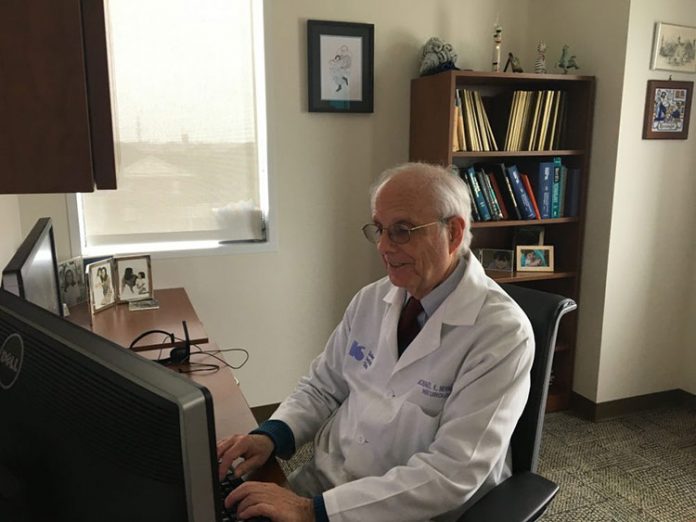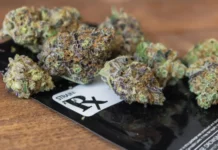Trysten Pearson, 16, was diagnosed with epilepsy in 2013. Since then, he has gone through two surgical procedures, one of which entailed an implant on his chest to shorten the seizures, and another one that involved placing intracranial electrodes in his brain. But after all these procedures and several medications, his seizures are still uncontrolled and he is currently at risk of what is known as Sudden Unexpected Death in Epilepsy (SUDEP).
Trysten’s mother, Shena Pearson, is among the parents with epileptic children in the greater Houston area that are excited about the possibilities of the cannabis-based treatment that started being sold in Texas in February. But along with hope, some concerns arise as well.
The Texas Legislature legalized the treatment after passing the Texas Compassionate Use Act in 2015. The law legalized oils containing low levels of tetrahydrocannabinol –the psychoactive element in cannabis, known as THC– and high levels of CBD or cannabidiol, a non-euphoric component of marijuana known to treat epilepsy and other chronic medical conditions.
Patients ingest the oil which, according to some medical research, can help reduce or shorten their seizures. The state will regulate and distribute the oils to patients whose symptoms have not responded to federally approved medication.
However, the lengthy process involving, for instance, the registration of the three cannabis dispensaries approved by the state resulted in the first order being delivered only on February 1st this year, as reported by the Houston Chronicle.
Also, the law, which refers to the treatment as “low-THC cannabis,” establishes several requirements.
For example, the treatment is legal only for intractable epilepsy, which the law defines as a disorder in which the patient’s seizures have been treated by at least two “antiepileptic drugs that have failed to control the seizures.” That makes it a requirement to have the patient diagnosed with that kind of epilepsy.
According to estimates from the Epilepsy Foundation of Central and South Texas based on data from 2014, there are approximately 160,000 Texans who suffer from intractable epilepsy.
Finally, the patient’s doctor must determine if the treatment is reasonable. And only permanent residents of Texas can benefit from it.
Long chain of requirements
Besides those requirements, the patient needs to get approval from two physicians registered in the Compassionate Use Registry of Texas (CURT). The physicians registered in the CURT are the only ones authorized to prescribe the treatment in the state. As of the publication of this story, there were 21 physicians registered with the CURT.
According to the law, a physician who wants to register in the CURT must be certified by the American Board of Psychiatry and Neurology (ABPN) in either epilepsy or neurology, or neurology with special qualification in child neurology.
Additionally, the physician must dedicate “a significant portion of clinical practice to the evaluation and treatment of epilepsy.”
Another option is that the physician is certified in neurophysiology by the ABPN or by the American Board of Clinical Neurophysiology (ABCN).
The law doesn’t establish age limitations for the patients.
Nonetheless, for Shena Pearson and Trysten, who live in Texas City, the law’s multiple requirements are worth it.
Persistence
“We will jump through the hoops and we will do what we have to do to get it done,” says Pearson, who assures parents of children who have epilepsy are typically used to being persistent.
As an example, she explains it is difficult for her to obtain a medication called Midazolam, which Trysten needs to regain his breath when he is having a seizure and that Pearson and her son call their “emergency rescue medication.”
In 2014, Trysten co-founded a support group for epilepsy patients living in Galveston County, and Pearson has been hearing about the low-THC cannabis treatment for about three years, in part because of her relationship with one of the Texas affiliates of the Epilepsy Foundation.
Currently, the pediatric neurologist who treats Trysten, and who is also a specialist in epilepsy, is applying with the Texas Department of Public Safety (DPS) to be registered in the CURT.
“We know that she’s doing everything that she can do to get her approval,” says Pearson about the doctor. She says some of the medications Trysten has used have been “very harsh on his body”: for example, they made him vomit.
“We are desperate to find something that’s gonna work for him and we have heard the stories and seen the news reports of children with epilepsy that it’s impacted their lives in a very great, amazing way,” Pearson says, referring to the low-THC cannabis treatment.
“That is our hope for Trysten,” she adds, “that we can, you know, after all these failed medications and failed surgeries, that we can move him in this direction.”
But Pearson also has concerns.
For instance, she wonders whether or not the treatment could cause negative side effects or problematic reactions because of the epilepsy medications that Trysten currently uses.
The cost of the treatment also worries her, since medical insurance carriers do not cover it. In addition to that, Pearson thinks about the possibility that her son might fail drug tests when he looks for a job.
Sugar Land resident Piper Lindeen also has a son who suffers from epilepsy. His name is Zachary, he is nine years-old and has had seizures since he was approximately four.
Zachary has already tried about seven medications.
Charlotte’s Web
Lindeen first learned about the treatment approximately four years ago through news reports about Charlotte Figi, a girl from Colorado who has been successfully treated for Dravet Syndrome –a rare and severe form of intractable epilepsy— with a low-THC cannabis treatment. Figi gave name to the oil known and marketed as Charlotte’s Web.
“We’ve exhausted a lot of… a lot of our pharmaceutical avenues,” Lindeen acknowledges. “My son’s physician doesn’t feel like he has good odds of success of achieving seizure freedom from medication.”
Zachary’s doctors, she explains, have told her they don’t think surgery would help alleviate his condition either.
Out of the 21 doctors registered in the CURT, seven work in the greater Houston area and Lindeen’s son is being treated by one of them: Doctor Michael Newmark, a neurologist and epilepsy specialist at Houston’s Kelsey-Seybold Clinic.
“Patients are interested and excited,” says Newmark, although he adds there are still unanswered questions. “They don’t know about dosing which, actually, the physicians really don’t know much about it either. They don’t know about cost, nor do they know about side effects or benefits, but they’re intrigued.”
Potential cost
According to the website texascompassionateaccess.org, which is managed by the Epilepsy Foundation of Central and South Texas, the cost of the treatment varies according to the severity of the epilepsy, as well as the patient’s weight, but the majority of patients will pay between $180 and $240 per month.
For doctor Newmark, this first year of legal sales of low-THC cannabis treatments in Texas will be, in a certain way, a year of testing because “we are all learning about this and we are gonna be learning from our patients.”
Also, the physician acknowledges some of his colleagues are, at least initially, “uncomfortable” with the possibility of using cannabis to treat epilepsy.
Doctor Joshua Rotenberg, of Houston Specialty Clinic, agrees with Newmark.
Rotenberg, who is also registered in the CURT, notes he senses “a lot of hesitation” and “fear” among physicians regarding the low-THC cannabis treatment in Texas, partly because of doubts about the legal aspects surrounding it, and partly because of what is still a lack of knowledge about the treatment itself by those not specialized in epilepsy or not familiar with the research yet.
Rotenberg says the discussion about low-THC cannabis treatments for epilepsy has increased over the last five years and adds that “this medicine is helping a group of people that are really suffering and are really impaired from their epilepsy.” There are over 20 other states in the country where cannabis has been legalized for medical purposes.
An impactful illness
Rotenberg underlines an illness as impactful as epilepsy typically affects more than just the patient. “It’s not just them, it’s their whole families, these are kids that are having many, many dozens of seizures a day and they have no life, or they have very little quality of life and, so, most of the parents that I see are running towards it as an option to help their children,” explains the physician about the treatment.
Rotenberg also notes several parents of children with epilepsy have gone to other states to buy low-THC cannabis treatments.
Buying the treatment in other states up until now is something Donna Stahlhut, CEO of the Houston office for the Epilepsy Foundation in Texas, is familiar with.
“I know families who have gone to Colorado to get the product and some have been successful and some have not but, if it is successful, it’s… it’s remarkable,” says Stahlhut.














